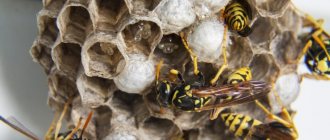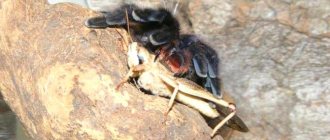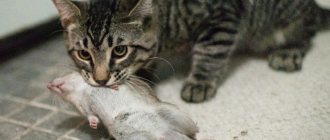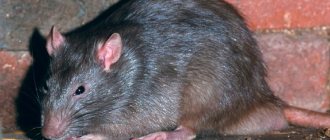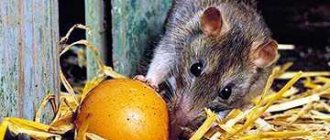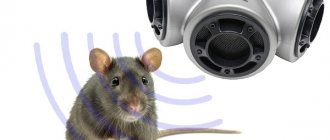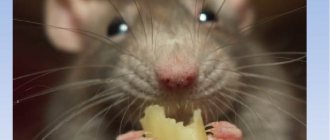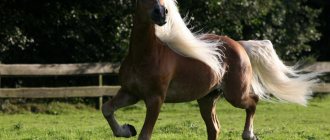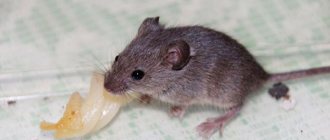What are the benefits of rats and mice in nature?
Perhaps the very concept of “benefits in nature” is not entirely correct.
In nature, living things simply take their place. Someone eats them, they eat something. Energy passes through this chain and substances move. Still others pollinate others, and others force some out of their favorite places. And some are too noisy and frighten someone with a sensitive psyche. Well, mice eat grains, well, owls, foxes and wolves eat them. Well, they dig minks, probably to ventilate the soil. Is this beneficial or harmful? Yes, it’s neutral, perhaps, everyone here has their place. I can imagine an explosive growth in the population of some voles, resulting in a bunch of seeds of field cereals being eaten and a shift in the species composition of grasses in the meadows. But how much joy there is for all the martens. And how many healthy children they will have. And in any case, in a year or two the number of mice will settle down.
By the way, what about rats? I don’t even know where they are found in the wild. Except that I saw a scary natural rat in the park, it was eating a bun that people were throwing into the lake for the ducks. Well, that’s good, there will be less garbage in the water; neither the ducks nor the fish will be able to cope with such kilograms of bread anyway.
Surely somewhere in the world there is a magical place with rats living humbly - not in a terrible mass on human waste, but quietly along the banks of rivers. They eat some roots and chicks and pay tribute to the local falcons, wild cats and parasites for this. No explosions, no destruction. No benefit, no harm. One continuous balance.
Source
What are mosquitoes for?
Mosquitoes are food for other animals, for example, dragonflies, bats, frogs, and some birds, for example, swifts, waders, dawns, tits, nightingales. Mosquito larvae eat fish, which is an important element of their diet. For example, bloodworms are the larvae of mosquitoes of the species Chironomidae and Tendipedidae. If they are not in the reservoir, then the nutrition of the fish in this reservoir will be greatly affected.
Some mosquito repellents, for example, Biolarvitsid-100, are specifically designed to destroy the population by affecting the larvae in the water. If this happens in a damp basement, then this is one thing, but if in a pond or other body of water, you can achieve that by destroying mosquitoes thoughtlessly, you will also destroy all the fish, as was the case in the 60s in the Ob River basin, where the destruction of mosquitoes led to because the fish, whose fry fed on mosquito larvae, disappeared.
What are rats for?
In nature there is no concept of “unwanted species”; one is food for another
Are there any benefits to rats? Yes, remembering the cartoon “Ratatouille”, one would like to say that in France, rats cook food. But this is a joke, what do we know about rats? Only that they multiply with enchanting speed, take root wherever possible, are extremely smart and quick-witted, have good physical characteristics, jump, run and swim well. In addition, they carry many diseases dangerous to humans and animals, cause enormous economic damage, etc. That is why many people prefer not to drive out rats using harmless ultrasonic devices, but to destroy them forever using poisons or traps.
However, humans are primarily to blame for the spread of rats. In cities where rats have chosen garbage dumps and basements, there are practically no natural enemies, birds of prey and animals, and accumulations of garbage only improve the living conditions of rodents. In their natural wild environment, rats do not fatten like that; they are eaten by owls and eagle owls, storks and other birds, ferrets, weasels, etc. So one species of animal is the food of another species of animal.
The white rat is a very important animal for biological research. No matter how it looks, thanks to her, new effective medicines are being discovered, since her susceptibility to diseases is similar to that of humans.
What are mice for?
Like rats, mice are food for other animals. And although mice have no direct benefit to humans, it is impossible to say that a mouse on the ground is useless. Yes, they destroy the harvest, yes, they spoil things, yes, they spread infection, but this is a human perspective, but what if you look from the perspective of other creatures? As it is written in Leo Tolstoy’s story “Why do we need mice,” if someone wanted to exterminate all the mice, then a bunch of animals would come to ask for them. For example, foxes would come to complain that now they have nothing to eat, and they will have to steal hens and chicks, partridges and black grouse would complain that foxes are ruining their nests, because they have stopped eating mice.
Like rats, mice are also used for tests and experiments in laboratory conditions. So mice are needed both by humans and in nature, and if there are too many of them in your area, then perhaps their natural enemies have decreased, you will have to expel the mice with ultrasound or set mousetraps.
Animals in their natural environment
Mice live in nature in trees, hollows, burrows, and nests. Some representatives of mice choose arid areas, others settle closer to bodies of water. The animals swim well, but prefer not to get into the water.
Read also: How to identify crystal or glass
You can spot the animal in the garden, in the vegetable garden, in the forest, on the field, in the stones. There is not a single corner on earth to which small, agile animals could not adapt.
- Mice dig numerous passages in the ground and build entire tunnels. They spend most of their time underground, raising their offspring. They come to the surface to search for food.
- In trees, mice often occupy abandoned hollows of other animals and build homes in cracks. They build nests like birds' nests from twigs, sticks, and moss. Or they simply destroy ready-made bird nests and settle there themselves.
- In rocky mountainous areas, mice make nests in caves, under stones, and on slopes.
You can spot mice in the dark. It is at this time that the peak of activity occurs. The animals look for food, stock up, feed their babies, and mate. If there is a shortage of food, the mouse leaves the shelter during the day at its own risk.
On a note!
What are horseflies needed for?
Is this really a dead-end question? Well, could there be any benefit from horse flies? Everyone knows that horseflies bite painfully, an itchy wound appears at the site of the bite, and part of the body may swell from an allergic reaction. In addition, horseflies can carry dangerous diseases, so why feel sorry for them?
As always, there are a few things to figure out. Let's start with the fact that not all horseflies bite. Like mosquitoes, horseflies' bloodsuckers are females, while males prefer to drink flower nectar and are completely harmless. However, people eliminate horse flies by creating traps for them, such as the H-Trap. This is done not so much for the sake of the people themselves, but for the sake of domestic animals, horses, cows and others. They suffer the most from bites, and the presence of such traps on farms is understandable.
But is there any benefit from horse flies? It turns out there is. They are an important link in natural food chains. Insectivorous birds feed on them; in addition, horseflies participate in plant pollination. If horseflies are destroyed in large quantities, the ecological balance will be disrupted.
What are moles for?
Moles for the most part do not harm agriculture and gardening, as is commonly believed. On the contrary, moles loosen the soil, providing oxygen and water access to the soil. In addition, moles eat underground insects, pupae, caterpillars and other pests, as well as small animals if they find themselves in its hole. The harm from them is not so great; their main diet is earthworms, which also loosen and process the soil.
A real mole is not interested in root crops and roots of garden plants; it does not feed on them; they are gnawed mainly by mice and mouse-like rodents, and not moles at all. For that matter, the mole is not a rodent at all. He doesn't need to sharpen his incisors, which are quite small.
The only time you want to get rid of a mole is when it starts digging up the lawns, leaving high molehills on them. This spoils the appearance of the site, and the owners prefer to kick the mole out. In this case, it is humane not to catch the mole in a trap, but simply install 2-3 or more earth-moving pest repellers, such as Tornado OZV.01 or Tornado OZV.02, on the site.
Cons of content
Unfortunately, rats do not have their drawbacks. But the shortcomings of these cute rodents are very minor, and they can be easily dealt with.
Tendency to diseases
Rats have a fairly weak immune system, so fluffies often get sick. In addition, a predisposition to certain diseases is inherent in them at the genetic level. Most often, rodent owners encounter the following ailments of their pets:
- ARVI;
- malignant and benign neoplasms;
- mycoplasmosis;
- atherosclerosis;
- renal failure;
- pneumonia.
Rats also often suffer from fleas, lice, ticks, worms and other parasites.
Short lifespan
On average, rats live about 3 years. Compared to other types of pets, this is a very short period of time. Some varieties of decorative rats, for example, albinos, live only 1.5-2 years. Long-livers are also found among rodents. With proper care and timely treatment, a rat can live up to 4-4.5 years.
Marking territory
Some novice breeders mistakenly believe that only males mark territory. However, females also put their marks everywhere. The only difference is that the urine of male rats has a more pungent, specific odor. Regular cleaning of the cage will help solve this problem.
Unpleasant smell
During the life of a rat, like any other animal, an unpleasant odor is released. And it doesn't just come from excrement or urine. The endocrine glands also emit a specific aroma, to get rid of which you will have to regularly subject your pet to water procedures.
Unpleasant associations
The appearance of rodents, to put it mildly, scares some people away. Some consider cute decorative fluffies to be as aggressive as their wild relatives. And some breeds, for example, the Sphynx, are generally terrifying to especially impressionable people.
Damage to things
As long as the rat is in the cage, its owner’s property is completely safe. But rodents are very agile and are able to open a weak lock on their own. If he escapes, the fluffy will chew everything that gets in his way - furniture, wallpaper, clothes, wires. Therefore, it is recommended to place even a cage with a rat away from walls and any things - otherwise the rat can reach them through the twigs.
Noise at night
Rats are nocturnal animals. Therefore, they often go to bed only in the morning. And at night they stay awake, play, frolic, learn everything new. This feature can cause discomfort to owners, especially if small children live in the house. To ensure that pets do not disturb anyone’s sleep, it is better to place the cage in a separate room.
Aesthetic problems
Adult male rats have very prominent genitals. This is especially noticeable in representatives of short-haired and hairless varieties. This feature is very off-putting or confusing for some people.
Expensive treatment
The health of rats is quite poor; fluffies get sick very often. Therefore, they will have to be treated constantly, paying considerable sums for medical services. Moreover, ordinary veterinarians rarely work with such small animals as rodents. Most likely, you will need to look for a special doctor for rats - a ratologist.
The problem is aggravated by the fact that there is only one specialist for 2-3 cities. Therefore, for treatment, you may have to transport the animal to a neighboring village.
What are cockroaches for?
If you are unhappy that cockroaches have settled in your house, then most likely it is your own fault, you do not fix the leaking water supply, do not remove leftover food, or do not take out the trash on time. Why are cockroaches harmful? They spread infection, you say. Well, they're not actually more contagious than your cat or dog, and you're not going to exterminate them.
So, in nature, everything is interconnected, by destroying one type of pest, you destroy someone’s food, leaving someone without food. However, this does not mean that you do not need to get rid of pests, it is only important to do it wisely.
Source
Authorization on the site
Sources
- Makhov S. Yu. Personal security strategy: educational manual; Lights - Moscow, 2014. - 568 p.
- Nomain, Alexey How to sell a credit car or a mortgaged apartment / Alexey Nomain. - M.: Publishing solutions, 2009. - 715 p.
- Tatyana, Viktorovna Evdokimova Features of the Russian intellectual property market in the context of participation in the WTO. Monograph / Tatyana Viktorovna Evdokimova. - M.: Prospekt, 2006. - 925 p.
- Yuri, Fedorovich Bespalov Cases of inheritance: some controversial issues of law enforcement. 2nd edition / Yuri Fedorovich Bespalov. - M.: Prospekt, 2014. - 700 p.
- Shastitko, A.E. Application of antimonopoly legislation in the markets of derivative goods: from determining product boundaries to advocating competition / A.E. Shastitko. - M.: Synergy, 2015. - 809 p.
Lifestyle of a field mouse and its diet
It is worth immediately noting that these mammals lead, for the most part, a nocturnal and twilight lifestyle. During the daytime, they have a more important task - to hide from predators so as not to become someone's lunch. And there’s more than enough to feast on the field mouse of hunters!
And where can this baby hide from the watchful eyes of carnivorous hunters? Yes, anywhere: in a pile of leaves, a haystack, or you can climb into the roots of bushes and trees. In the end, in this case, field mice even build underground passages that resemble a labyrinth.
Field mice are very prolific animals.
And these little animals can very carefully trample their “way back” on the ground, which is difficult to notice with the naked eye. They do this in order to return to their shelter as quickly as possible in case of danger.
The field mouse's diet includes both plant products and some animals. Rodents eat greens from plants, a variety of berries and fruits, seeds, including cereals, as well as insects.
To feed themselves in winter, field mice try to “settle” closer to human habitation. Sometimes they spend the winter in the barn, in the attic, or they may even look into the kitchen.
The main food for a field mouse is plant-based.
Despite periodic lack of food, field mice do not lose fertility. Their ability to reproduce can be the envy of any animal.
The benefits and harms of the field mouse
Many will say - well, what is the use of them? They just chew and ruin everything! But this is not the case in the ecosystem. These animals are an important element of the food chain. Without the existence of this little tailed mischief, many birds and animals would be left without basic food, for example.
“It has spread like rats” - we characterize any rapidly spreading phenomenon with such a colorful phrase. In terms of fertility and reproduction rate, these long-tailed, inconspicuous mammals are ahead of all animals living on our planet. Many people associate rats with unsanitary conditions and diseases, because they live in far from the most hygienic conditions: in garbage dumps, in gutters, in sewers and subway tunnels.
Habitats and offspring of rats
But their original habitats were tropical and subtropical forests of Southeast Asia. Thanks to their extremely high adaptability, rats have spread throughout the globe. There are especially many rats in large cities, where their number is comparable to the population. It is estimated that there are two rats for every inhabitant of the planet.
These omnivorous and ubiquitous animals give birth up to 8 times a year, each time bringing from 9 to 20 cubs. Like rabbits, rats are ready for a new mating within 18 hours after birth. Their pregnancy lasts about 24 days. Rats are born naked, blind and deaf. During the first few days, females have to lick, feed and keep their babies warm around the clock. Upon reaching 30 days of age, the grown-up rat pups begin an independent life. They reach adult size by 11-12 months. And they reach puberty even earlier.
The harm and benefits of rats
Since ancient times, rats have caused people many problems. They cause enormous harm by eating food and feed supplies, rendering various materials and mechanisms unusable. These animals are natural carriers of such dangerous infections as plague, Q fever, rat typhus, salmonellosis, and icteric leptospirosis.
It was rats and their fleas that were the main culprits of several devastating plague epidemics. It is not surprising that people throughout their centuries-old history have been trying to exterminate rats or at least reduce their numbers. However, the habitat of these rodents continues to expand, and their populations are becoming higher every year. The reasons for this are the high reproductive potential of rats and increased resistance to poisons. Rats are considered the most resilient rodents on Earth.
However, they also bring some benefits. Rats have long been used as experimental animals in various medical and pharmaceutical research. And decorative rats are one of the best pets. They are smart, quick-witted, easy to tame, amenable to training and do not require special care.
Damage from rodents
Rats and mice are carriers of dangerous diseases. They carry infections with their saliva for several months. Infection occurs in basements, garbage dumps and other damp and dirty places. There they pick up typhoid bacilli, tuberculosis and other infections. When rodents get into a person’s home with food, they leave particles of saliva, thereby putting the health and life of the owners in danger.
Rodents are capable of destroying grain reserves and food products. This applies to rats and mice. There are also moles that destroy vegetables and crops in areas. It is not uncommon for entire fields to suffer from the actions of rodents, where it is necessary to install a repeller every hundred meters in order to preserve the crop.
Benefits of rodents
But in nature there are also useful rodents, without which it is impossible to grow many crops. Field mice destroy harmful insects, and their feces are quite a useful product for plants. In addition, they loosen the soil, saturating it with oxygen.
Other animals feed on wild rodents, thus the cycle that ensures the existence of all living things does not stop in the world. And this is very important, because if natural metabolism is disrupted in nature, serious changes will occur, gradually leading to the disappearance of animals and plants, without which the life of mankind will cease.
Nowadays it has become popular to keep rodents as pets. White mice and black rats are very common in homes. And in some countries, these animals are even trained and taught to find mines in the fields. And they conduct various entertaining shows with them, showing the skills of these small but very smart animals.
Thus, it is impossible to say specifically whether rodents are necessary or whether the world will do just fine without them. If, for example, we can say for sure that an ultrasonic dog repeller can protect a child and an adult from an attack by a pack of dogs, then there is no clear answer about rodents. In any case, you shouldn’t go against nature, but if the harmful effects of rats or mice are severe, you can take measures to preserve life and crops.
Do mice pose a danger to humans? Every person, without a doubt, has at least once encountered mice in the house. It would seem that they are harmless rodents who just carry a little food for themselves. But in reality, not everything is so smooth.
Gray “brothers” can harm your home and health. Therefore, if you notice a mouse at home, you need to rid your home of guests as quickly as possible.
There are about three hundred species of mice on the planet and they all constantly migrate, returning to our warm homes in winter. Usually we meet only three main types of mice: field, forest and house mice
Having found a suitable and hard-to-reach burrow, they breed and feed their young, which can number from three to ten. The gestation period in mice lasts about eight weeks, and offspring appear up to ten times a year.
The average lifespan of mice is one year. There is usually not one, but several mouse families living in a house, and each of them steals food for its young.
In addition to food spoilage, there are other unpleasant and dangerous factors for human health caused by mice.
In
the oral cavity of these rodents there are many pathogenic microbes
that can cause terrible diseases such as typhoid, cholera, and plague.
Mice are able to tolerate radiation and their immunity adapts to the environment. That is, it is not easy to say goodbye to them without their desire.
In addition, they are very nimble, reaching speeds of up to thirteen kilometers per hour. Therefore, catching a mouse with your bare hands is a useless and stupid task.
Now let's look at other reasons why mice are dangerous to humans.
It often happens that mice are the cause of short circuits and fires.
, these small rodents love to chew on electrical wiring, especially in hard-to-reach places.
- mice look for the most easily accessible food and take it to their burrow. It is necessary to get rid of products tested by mice and open sources of water in your home.
After all, there is a high probability of being infected with viruses and bacteria carried by gray neighbors. One mouse can eat ten kilograms of food in a year, and up to thirty percent of its weight at a time.
The smell left by mice is not dangerous, but very unpleasant
. If you do not start the fight to eliminate odors in a timely manner, then over time it will be almost impossible to get rid of it.
- chewed electrical appliances, furniture, pillows and blankets, even candles and soap, all this is the work of gray pests.
As you can see, mice are quite capable of making a person’s life uncomfortable and damaging their health. Therefore, the first time little pranksters appear in the house, it is necessary to quickly get rid of them.
Of course, in some cases, the presence of felines in the house can drive mice out of the house. But often this method is not always effective. Moreover, cats are not always able to get through where a mouse can get through.
Mousetraps are only effective at first. As soon as a couple of mice are caught, the rest will sense the danger and will avoid their places of installation.
Years of observation have determined that mice are afraid of piercing and cutting objects. For example, pots of roses or cacti placed around the home can repel rodents.
All these methods, of course, are not as effective as pest control services.
. Therefore, if you do not want to risk the integrity of your home and your own health, then it is better to contact specialists who will help you get rid of rodents.
What diseases do rodents carry?
Rodents can spread more than 20 diseases that are dangerous to humans. Bubonic plague, murine typhus, salmonellosis, leptospirosis, and West African Lassa fever are just a few of the potentially fatal diseases carried by rats. These diseases caused the death of 25 million Europeans from the XIY to the XYII centuries.
It is believed that over the past millennium, diseases carried by rats have claimed more lives than all wars and revolutions combined.
At the end of the 20th century, medical attention was focused on rodent-borne hemorrhagic (mouse) fever viruses. From 1995 to 2000, at least 25 “new” hantaviruses and arenaviruses associated with rodents of the Mouse family were discovered. Approximately 200 thousand new cases of fever with kidney damage are recorded annually in Asia, with a mortality rate of 1-15%. Each virus is usually associated with one specific host species. Humans become infected through contact with rodent urine, feces or saliva.
Doctors first encountered this disease in Russia in the 30s of the last century. Today, mouse fever occurs almost throughout the country. In 2022, more than 8 thousand Russians fell ill with hemorrhagic fever.
What are mosquitoes for?
Mosquitoes are food for other animals, for example, dragonflies, bats, frogs, and some birds, for example, swifts, waders, dawns, tits, nightingales. Mosquito larvae eat fish, which is an important element of their diet. For example, bloodworms are the larvae of mosquitoes of the species Chironomidae and Tendipedidae. If they are not in the reservoir, then the nutrition of the fish in this reservoir will be greatly affected.
Some mosquito repellents, for example, Biolarvitsid-100, are specifically designed to destroy the population by affecting the larvae in the water. If this happens in a damp basement, then this is one thing, but if in a pond or other body of water, you can achieve that by destroying mosquitoes thoughtlessly, you will also destroy all the fish, as was the case in the 60s in the Ob River basin, where the destruction of mosquitoes led to because the fish, whose fry fed on mosquito larvae, disappeared.
Rats are very affectionate
This animal is very cute, soft, affectionate. The rat is easily tamed and seeks communication with its owner. The rodent will crawl inside your sleeves, sleep on your arms or neck. Some animals can even lick the owner, bite, scratch, and dig in the hair.
Domestic rats are not aggressive, they do not bite the owner, but he can defend himself if he gets scared or feels pain. But if they love you and truly trust you, then even in this case they will most likely just squeak, but will not bite.
Are wood lice dangerous for humans?
Woodlice cannot bite or physically harm a person, but they are capable of stealthily ruining the quiet life of household members with their sudden appearance.
If there is a lack of organic food, they can destroy fastidious and delicate exotic house plants such as orchids, cacti, and ferns.
If wood lice have settled in a pot or tub of flowers, this will soon lead to compaction of the soil. The plant may die due to a lack of oxygen or a violation of the integrity of the root system (pests like to “snack” on nutritious roots).
If insects have chosen the cellar, then the vegetable reserves prepared for future use for the winter may be significantly reduced.
In addition, when colonizing a greenhouse, miniature crustaceans can destroy sprouts of vegetable crops that have just hatched, which will affect the harvest.
Woodlice, due to their size, squeeze into any crack, so on their paws they can carry fungal spores, depriving, and other bacteria, running from the toilet to the kitchen for the next portion of food.
What are rats for?
In nature there is no concept of “unwanted species”; one is food for another
However, humans are primarily to blame for the spread of rats. In cities where rats have chosen garbage dumps and basements, there are practically no natural enemies, birds of prey and animals, and accumulations of garbage only improve the living conditions of rodents. In their natural wild environment, rats do not fatten like that; they are eaten by owls and eagle owls, storks and other birds, ferrets, weasels, etc. So one species of animal is the food of another species of animal.
The white rat is a very important animal for biological research. No matter how it looks, thanks to her, new effective medicines are being discovered, since her susceptibility to diseases is similar to that of humans.
Appearance
The river rat is a close relative of the common pasyuk. Hence the external similarity of these rodents. The water rat is also often confused with the muskrat, due to their appearance and similar habitats.
This is a small animal with gray-brown or black fur. The body length of an adult individual can reach 25 cm, and the average weight is 250 g. Sexual dimorphism is weakly expressed.
The muzzle is short, slightly reminiscent of a guinea pig . Small black eyes. Long front teeth, often yellow or orange. The ears are small, barely noticeable.
The body is elongated and flexible. The tail is long, but unlike the ordinary rats we are used to, it is not bald, but covered with thick hair. Only the very tip is bald; there is a small brush on it.
The color of the abdomen is slightly lighter than the back and head. In some varieties the tip of the tail may be white. The coat is thick and of medium length. Perfectly protects the rodent from the cold.
The river rat is able to swim even in fairly cool water due to its thick undercoat. Due to the length of the fur, the legs seem quite short. The river rat is also called: European vole, water rat and underwater rat.
Symbol of the New Year 2022: how rats help humans
See also Cute Animal - 2022: the best portraits of animals from Novosibirsk News
According to the Eastern calendar, the symbol of 2022 is the rat. It is this rodent that opens the 12-year calendar cycle. Novosibirsk News tells how rats help humanity and why they are considered the best pets.
14:33, December 31, 2019
Rats are true workers of science. It is on them that new drugs are tested and the mechanisms of diseases are studied. For example, at the Institute of Cytology and Genetics, using rodents, scientists are trying to find out what causes hypertension. And although humans’ closest relatives in the animal kingdom are primates, rats are a much more convenient laboratory model.
“Rats are very convenient due to their size. They are small enough that you can fit quite a few of them in one room. They reproduce quite quickly, much faster than monkeys. They are cheaper to maintain,” lists Alisa Seryapina, a researcher at the Laboratory of Evolutionary Genetics at the Institute of Cytology and Genetics of the SB RAS.
These animals are used to study diabetes, obesity, cancer and various mental disorders such as schizophrenia. Novosibirsk geneticists are also studying the mechanisms of aggressive behavior. Two special strains of rats help: tame and aggressive. Local animals are the result of a repeated experiment in domestication, that is, domestication. Now the 95th generation of rodents is participating in research.
“In our rats, this is all fixed at the genetic level. The average population score for our tame rats is 3.5 points. The aggressive ones have minus 3.5 points,” explains Rimma Kozhemyakina, junior researcher at the Laboratory of Evolutionary Genetics at the Institute of Cytology and Genetics SB RAS.
Scientists do not know exactly how many points on such a scale domestic rats can earn. But the owners of such animals are sure: these are the best pets. They are no worse than dogs or cats, and you can have fun with them too.
“They love to climb everywhere. Children take them into their room, they can climb on Legos, on houses, on construction sets. You can wear them on your shoulders, they climb onto your head,” says Novosibirsk resident Yana Kazikhanova.
Rats are affectionate, kind and loyal animals, and can be a great New Year's gift. The main thing to remember is: this is not a toy, but a living creature, you need to properly care for it and love it, then it will love you in return.
How rats are useful for people - see the story of Novosibirsk News:
#Cute City #Animals #Science #Healthcare #New Year
Appearance
The river rat is a close relative of the common pasyuk. Hence the external similarity of these rodents. The water rat is also often confused with the muskrat, due to their appearance and similar habitats.
This is a small animal with gray-brown or black fur. The body length of an adult individual can reach 25 cm, and the average weight is 250 g. Sexual dimorphism is weakly expressed.
The muzzle is short, slightly reminiscent of a guinea pig . Small black eyes. Long front teeth, often yellow or orange. The ears are small, barely noticeable.
The body is elongated and flexible. The tail is long, but unlike the ordinary rats we are used to, it is not bald, but covered with thick hair. Only the very tip is bald; there is a small brush on it.
The color of the abdomen is slightly lighter than the back and head. In some varieties the tip of the tail may be white. The coat is thick and of medium length. Perfectly protects the rodent from the cold.
The river rat is able to swim even in fairly cool water due to its thick undercoat. Due to the length of the fur, the legs seem quite short. The river rat is also called: European vole, water rat and underwater rat.
What are mice for?
Like rats, mice are food for other animals. And although mice have no direct benefit to humans, it is impossible to say that a mouse on the ground is useless. Yes, they destroy the harvest, yes, they spoil things, yes, they spread infection, but this is a human perspective, but what if you look from the perspective of other creatures? As it is written in Leo Tolstoy’s story “Why do we need mice,” if someone wanted to exterminate all the mice, then a bunch of animals would come to ask for them. For example, foxes would come to complain that now they have nothing to eat, and they will have to steal hens and chicks, partridges and black grouse would complain that foxes are ruining their nests, because they have stopped eating mice.
Like rats, mice are also used for tests and experiments in laboratory conditions. So mice are needed both by humans and in nature, and if there are too many of them in your area, then perhaps their natural enemies have decreased, you will have to expel the mice with ultrasound or set mousetraps.
Trackballs can help, but are not always practical
Trackballs are a different matter entirely. Traditional square panels with a control ball have almost died out, giving way to modern ergonomic panels.
The user moves a light ball, achieving the highest precision in moving the cursor or brush - but at low speed.
In this case, only the fingers work; the hand remains at rest throughout the work of any duration.
A number of similar devices are produced by the Kensington company, modifying the manipulator body beyond recognition.
Now the fingers rest on the ball without load, the manipulator itself allows you to rest your hand, relaxing it.
But we will get to know them more closely in the next article - the nature of the work is changing too seriously.
What are horseflies needed for?
Is this really a dead-end question? Well, could there be any benefit from horse flies? Everyone knows that horseflies bite painfully, an itchy wound appears at the site of the bite, and part of the body may swell from an allergic reaction. In addition, horseflies can carry dangerous diseases, so why feel sorry for them?
As always, there are a few things to figure out. Let's start with the fact that not all horseflies bite. Like mosquitoes, horseflies' bloodsuckers are females, while males prefer to drink flower nectar and are completely harmless. However, people eliminate horse flies by creating traps for them, such as the H-Trap. This is done not so much for the sake of the people themselves, but for the sake of domestic animals, horses, cows and others. They suffer the most from bites, and the presence of such traps on farms is understandable.
But is there any benefit from horse flies? It turns out there is. They are an important link in natural food chains. Insectivorous birds feed on them; in addition, horseflies participate in plant pollination. If horseflies are destroyed in large quantities, the ecological balance will be disrupted.
What do we eat? Preservatives. 1 part. E200 - E223
08/26/2009 at 01:38 pm (Legislation, Interesting, products) Tags: Potassium benzoate, Calcium benzoate, Sodium benzoate, Benzoic acid, Sodium hydrosulfite, Hoffmann, Gooding, Sulfur dioxide, Potassium salt of sorbic acid, Muller, Parabens, Sodium pyrosulfite, Potassium sorbate, Calcium sorbate, Sodium sorbate, Sorbic acid, Sodium sulfite, allergic reactions, anesthetic, antibiotic, antimicrobial effect, antiseptic, asthma, permissible dosage, urticaria, behavioral disorder, para-hydroxybenzoic acid methyl ester sodium salt, para-hydroxybenzoic acid methyl ester, para-hydroxybenzoic acid propyl ester, para-hydroxybenzoic acid ethyl ester sodium salt, para-hydroxybenzoic acid ethyl ester, food additive, antifungal, antimicrobial, E200, E201, E202, E203, E210, E211, E212, E213, E214 , E215, E216, E217, E218, E219, E220, E221, E222, E223, gastric irritation, antispasmodic, agent, fungicidal
What are moles for?
Moles for the most part do not harm agriculture and gardening, as is commonly believed. On the contrary, moles loosen the soil, providing oxygen and water access to the soil. In addition, moles eat underground insects, pupae, caterpillars and other pests, as well as small animals if they find themselves in its hole. The harm from them is not so great; their main diet is earthworms, which also loosen and process the soil.
A real mole is not interested in root crops and roots of garden plants; it does not feed on them; they are gnawed mainly by mice and mouse-like rodents, and not moles at all. For that matter, the mole is not a rodent at all. He doesn't need to sharpen his incisors, which are quite small.
The only time you want to get rid of a mole is when it starts digging up the lawns, leaving high molehills on them. This spoils the appearance of the site, and the owners prefer to kick the mole out. In this case, it is humane not to catch the mole in a trap, but simply install 2-3 or more earth-moving pest repellers, such as Tornado OZV.01 or Tornado OZV.02, on the site.
Source
